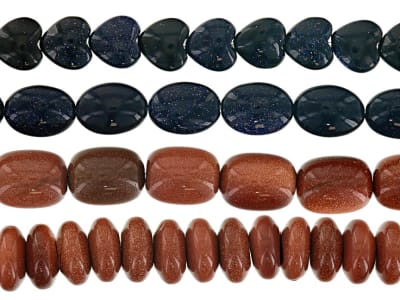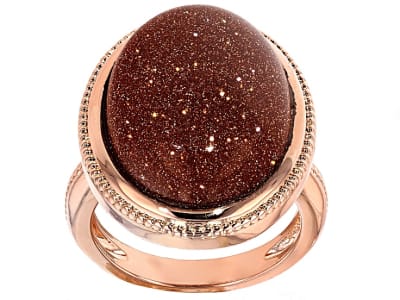Goldstone is glass that contains myriad of tiny angular crystals of copper. First made in Italy, goldstone forms by reduction of particles of copper oxide within the glass during a process called annealing. Nothing in nature looks quite like glittering goldstone. Made in three distinct colors (blue, green and orange), goldstone is a tough and durable material that can be made in large pieces and fashioned into slices and objects of almost any desired size and configuration.
General Information
Tolerance:can go OTL
LWUV: Variable
Goldstone Colors
-
 Blue
Blue -
 Brown
Brown -
 Green
Green -
 Orange
Orange
Alternate Names
Aventurine Glass
Countries of Origin
Unknown; China; Italy
History
First made in Italy, goldstone is glass that contains a myriad of tiny, angular, copper crystals. It forms by the reduction of particles of copper oxide within the glass during a process called annealing. Glittering goldstone is found in blue, green, and orange. It's a tough and durable material that is made in large pieces and fashioned into slices and objects of almost any desired size and configuration. Beads, baubles, and faceted gems - goldstone can do it all.
Care
Normal care

